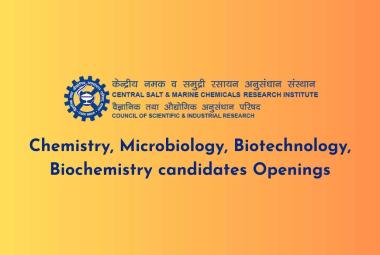About Authors:
Neha Tyagi*1, N.V Satheesh Madhav2
1KNGD Modi Institute Of Pharmaceutical Education And Reserach,
Modinagar-2 Uttar Pradesh, India
2Dehradun Institute Of Technology, Faculty Of Pharmacy,
Mussorie Diversion Road Village Makkawala PO Bhagwant pura -248009 Dehradun, Uttrakhand, India
*neha2487@gmail.com
Abstract:
The aim of research work was to isolate a novel bio material from the seeds of Buchanania Lanzan and to evaluate their potential for sustained drug delivery by formulating various micro particles using methylene chloride as solvent and bio material by solvent evaporation method. The bio polymer was isolated from the seeds of Buchanania Lanzan by simplified economical method. Four formulations were prepared using bio polymer in different ratios by solvent evaporation method. Acute toxicity studies were done in rats according to OECD guidelines. The formulated micro particles were subjected to various evaluation parameters like particle size , particle shape, entrappement efficacy and invitro drug release studies .on the basis of invitro drug release studies, the formulation with increased amount of bio polymer (FM4) was found to be better than other formulations and it was selected as optimized formulation. Invitro studies revealed that FM4 followed perfect zero first order kinetics release. among the different formulation FM4 showed release of drug for 8 hrs with 88.46% release.
REFERENCE ID: PHARMATUTOR-ART-1864
Introduction
Microencapsulation is a process of enclosing micron sized particles of solids or droplets of liquids or gasses in an inert shell, which in turn isolates and protects them from the external environment. The product obtained by this process is called as micro particles, microcapsules, microspheres which differentiate in morphology and internal structure. When the particle size is below 1µm are known as nanoparticles, nano capsules, nano spheres respectivelyand particles having diameter between 3 - 800µm are known as micro particles or microcapsules or microspheres. Particles larger than 1000µm are known as macro particles. Micro particles or microcapsules consist of two components namely core material and coat or shell material. Core material contains active ingredient while coat or shell material covers or protects the core material. Different types of materials like active pharmaceutical ingredients, proteins, peptides, volatile oils, food materials, pigments, dyes, monomers, catalysts, pesticides etc. can be encapsulated with different types of coat or shell materials like ethylcellulose, hydroxyl propyl methyl cellulose, sodium carboxy methyl cellulose, sodium alginate, PLGA, gelatine, polyesters, chitosan etc.
Microencapsulation Technology: There are various techniques available for the encapsulation of core materials. Broadly the methods are divided into two types.
Chemical methods, Physico-chemical methods & Physico-mechanical methods.
|
Chemical processes |
Physico-chemical process |
Physico-mechanical process |
|
Interfacial polymerization |
Coacervation and phase separation |
Spray drying and congealing |
|
In situ polymerization |
Sol-gel encapsulation |
Fluidized bed drying |
|
Poly condensation |
Supercritical CO2 assisted microencapsulation |
Solvent evaporation |
Zidovudine/Azidothymidine (AZT), the first anti?HIV compound approved for the clinical use is widely used for treatment of AIDS either alone or in combination with other antiviral agents and Zidovudine is water soluble and soluble at all pH ranges and absorbs throughout the gastrointestinal tract Zidovudine acts as a metabolic antagonist of thymidine and its antiviral effect is time dependant so a sustained release delivery of AZT is desired to maintain anti?AIDS effect and avoiding severe side effects. By considering above facts, the present study was aim to formulate and evaluate the sustained release matrix tablets of Zidovudine to prolong the release of drug for extended period of time in order to; Improve patient compliance, Reduce dosing frequency, Reduce side effects, Minimum plasma fluctuation, Increase bioavailability of the drug.
Materials
The model drug zidovudine was obtained from macloids pharma pvt ltd. as a gift sample. All the reagents were of analytical grade . double distilled water was used through out the study.
Isolation of bio polymer from buchanaia Lanzan
Seeds of Buchanania Lanzan were soaked in water for 2-3 hrs and the outer cover was removed. The seeds were grounded into a paste and then distilled water was added and filtered through muslin cloth. The milk was centrifuged and the supernatant liquid was separated and acetone was added in equal quantity and kept for 24 hrs. The settled biomaterial was separated by centrifugation for 5 -10 min and the isolated biomaterial was naturally dried and sieved through mesh size 120. The polymer obtained yields about 500 mg.
Formulation of zidovudine micro particles using bio POLYMER:-
Four different formulations were prepared by using solvent evaporation method. The micro particles were prepared by adding the drug to the desired volume of methylene chloride and bio material was dissolved in water separately in stirring mode at magnetic stirrer. Drug solution was added drop by drop and continuously stirred until methylene chloride evaporates. The micro particles were collected after the evaporation and were washed and subjected for various evaluation parameters.
Table no. 1 formulation prepared
|
S.No. |
Ingredients |
FM1 |
FM2 |
FM3 |
FM4 |
|
1 |
Drug (mg) |
50 |
50 |
50 |
50 |
|
2 |
Methylene chloride(ml) |
20 |
20 |
20 |
20 |
|
3 |
Bio polymer (mg) |
20 |
40 |
60 |
80 |
|
4 |
Distilled water (ml) |
q.s |
q.s |
q.s |
q.s |
Evaluation parameters
Particle size and shape: particle size and shape of the formulated microcapsules was determined by using Optical Microscope.
Drug content and entrapment efficacy:- 10mg microcapsules of each formulation were taken and dissolved in 10ml of distilled water. After that sonication was done for 10 min. The samples were kept overnight and diluted upto 10ml. 10 mg of drug was taken and different dilutions were prepared from 2-10µg/ml. Then samples were analyzed by UV at 252nm. The drug content in each formulation was calculated based on the absorbance values of known standard solutions.
Entrapment efficacywas calculated by the following formula.
Entrapment efficiency= drug content * 100 / 1000
NOW YOU CAN ALSO PUBLISH YOUR ARTICLE ONLINE.
SUBMIT YOUR ARTICLE/PROJECT AT articles@pharmatutor.org
Subscribe to Pharmatutor Alerts by Email
FIND OUT MORE ARTICLES AT OUR DATABASE
RELEASE STUDY: The release study was done by using dissolution apparatus type II. 5mg microcapsules were taken and filled in the empty capsules. The in-vitro release study was performed at two different pH values; a) 1.2 simulated gastric pH and b) 7.4 (simulated intestinal fluid). An accurately weighed sample responded in dissolution media consisting 900ml of 0.1N HCl (pH 1.2) and the dissolution was done for 2 hrs. at the end of 2 hrs 28.062gm of disodium hydrogen phosphate and 10.03 gm of potassium dihydrogen phosphate with .171 gm of sodium chloride were added to change the pH upto 7.4 and after that the study was performed for 24 hrs. The 5ml sample was withdrawn at different time interval and replaced with same volume of medium and the withdrawn samples were diluted and estimated for zidovudine concentration at 252nm. (by UV/VISIBLE double beam Spectrophotometer ). Drug release from different formulations versus time compared.
Results and discussions
Physicochemical properties of the bio material:
A novel bio polymer from Buchanania Lanzan was isolated by simplified economical process the yield was found to be 2.5% per 100 g. The bio polymer obtained was brownish to light brown color with a color changing point of 190-210 0C. The bio polymer showed positive tests for the carbohydrates and proteins.
Table no.2 Physical properties of the bio material:-
|
S.No. |
Parameters |
Observations |
|
1 |
Color |
light brown |
|
2 |
Odor |
Characteristic |
|
3 |
Taste |
Tasteless |
|
4 |
Solubility |
Water |
|
5 |
Color changing point |
190-210 0c ±10 |
Table no.3 Chemical properties of the bio material:
|
S.No. |
Chemical constituents |
Observations |
|
1. |
Carbohydrate |
Present |
|
2. |
Protein |
Present |
Evaluation PARAMETERS:-
|
Parameters |
FM1 |
FM2 |
FM3 |
FM4 |
|
Particle shape |
Oval (irregular) |
Spherical (irregular) |
Oval ( spherical) |
Spherical (irregular) |
|
Particle size |
138.3-141.6 |
149.2-154.0 |
167.3-172.4 |
163.7-168.3 |
|
Entrappement efficacy |
69.78% |
65.98% |
76.54% |
84.32% |

Invitrorelease studies: - The invitro releases in all formulations were performed in zero order, zero first order, higuchi equation in order to evaluate its release mechanism. The result showed the zero first order release pattern. Among the formulations, FM4 had a t50% and t80 % of 190 min and 280 min.

Invitrorelease study of micro particles of zidovudine.
Discussions
A novel bio polymer from Buchanania Lanzan was isolated by simplified economical process the yield was 500 mg. the bio polymer obtained was of brownish to light brown colour with a color changing point of 190-210 0C. The bio polymer showed positive tests for the presence of proteins and carbohydrates. Four different formulations were formulated using different ratios of bio material for the preparation of microparticles of zidovudine. The invitro release data in all the formulations was performed in zero order, first order, higuchi equation in order to evaluate its release mechanism.
CONCLUSION
A smart conclusion was drawn that the bio-material can serve as a potential agent for formulating various sustained release formulations for the treatment of various chronic ailments along with the advantages of being non-toxic, biodegradable and free from any adverse effects.
REFERENCES
1. Gabor F., Ertl B., Wirth M. and Mallinger R. Ketoprofen – poly (D.L. Lactic Co-glycolic acid) microparticles : Influence of manufacturing parameters and type of polymer on the release characteristics. J. Microencap. 1999; 16 : 1-12.
2. Millard C., Coudane J., Rault I and Vert M. In-vitro delivery of a sparingly water soluble compound from PLGA – 50 microparticles. J.Microencap. 2000; 17 : 1,13-28.
3. Fermandez R. U. Gines J.M. and Morillo E. Development of controlled release formulations of alachlor in ethylcellulose. J. of Microencap. 2000 ; 17 : 331-342.
4. Yang, C. Y. ,Tasy S.Y. and Tasing R.C.C. An enhanced process for encapsulating aspirin in ethylcellulose microcapsules by solvent evaporation in an O/W emulsion. J. Micrencap. 2000 ; 17(3) : 269-277.
5. Badmeier R., M.C. Ginity J.W. Solvent selection in the preparation of poly (dt:lactide) microparticles prepared by solvent evaporation method. International Journal of pharmaceutics. 1988 ; 43 : 179-186.
6. Lin Y.H.E., and Vasavada R.C. Studies on Microencapsulation of 5 fluorouracil with poly (ortho ester) polymers. J. Microencap. 2000 ; 17 : 1-11.
7. Lee J.H., Gaan, P.T. and Hookyun chii. Effect of formulation and processing variables on the characteristics of microspheres for water soluble drugs prepared by w/o/o double emulsion solvent diffusion method. Int. J. Pharm. 2000 ; 196 : 75-83.
8. Kumbar, S.G., Kulkarni, A.R., and Aminabharti T.M. Crosslinked chitosan microspheres for encapsulation of diclofenac sodium : effect of crosslinking agent. J. Microencap. 2002 ; 19 : 2, 173-180.
9. Jalil R., Nixom, J.R. Microencapsulation using poly(e-lactic acid) II preparative variables affecting microcapsules properties. J. Microencap 1990 ; 7 : 25-39.
10. Michael J.F. Theory of suspension in the pharmaceutical dosage forms Disperse Systems Eds. Liberman, 2nd rd Marcel Dekker. 1996 ; pp-31-32.
11. Chandy, T., Das, G.S. and Rao G.H.R. 5- Fluorounacil – loaded chitosan coated polylactic acid microspheres as biodegradable drug carriers for cerebral tumours., J Microencap. 2000 ; 17.5 : 625-638.
NOW YOU CAN ALSO PUBLISH YOUR ARTICLE ONLINE.
SUBMIT YOUR ARTICLE/PROJECT AT articles@pharmatutor.org
Subscribe to Pharmatutor Alerts by Email
FIND OUT MORE ARTICLES AT OUR DATABASE









